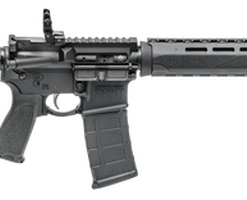Kalashnikov AK-74
$12,000.00
AK-74: Evolving the Iconic Legacy of the Kalashnikov
Specifications:
Caliber: 5.45x39mm
Barrel Length: 16.3″
Thread Pitch: M24x1.5 RH
Barrel Twist Rate: 1:8
Barrel Material: 4150 CMV
Barrel Finish: Nitride
Muzzle Device: Traditional AK-74 Muzzle Brake
Handguard: Polymer AKM Classic Handguard, Plum
Grip: Polymer AKM Classic Pistol Grip, Plum
Stock: Polymer Classic Side Folding Buttstock, Plum
Front Trunnion: Toolcraft Hammer Forged 4340AQ
Rear Sights: Standard 1,000-yard Rear Sight Leaf
Kalashnikov AK-74
The AK-74, a successor to the legendary AK-47, stands as a testament to the enduring impact of the Kalashnikov lineage on modern firearms design. Crafted by the Soviet Union and adopted by numerous nations, the AK-74 introduced a new caliber and modern refinements while preserving the core principles of simplicity and reliability. Let’s delve into the world of the AK-74, exploring its origins, key attributes, global influence, and its role in shaping the trajectory of firearms history.
Origins and Transition:
Developed in the 1970s by the Soviet Union’s Izhevsk Arms Plant, the AK-74 was designed to replace the widely used AK-47 while adapting to new challenges and advancements in firearm technology. The AK-74 retained the distinctive look and ergonomics of its predecessor while introducing significant improvements.
Key Features and Evolution:
- 5.45x39mm Caliber: One of the most significant changes from the AK-47 is the AK-74’s adoption of the 5.45x39mm cartridge. This ammunition offered improved accuracy and controllability while maintaining lethality.
- Reduced Recoil: The AK-74’s 5.45mm cartridge contributed to reduced recoil, allowing for more accurate rapid fire and follow-up shots.
- Interchangeable Magazines: Like its predecessor, the AK-74 employs detachable magazines, usually holding 30 rounds. This contributes to the rifle’s firepower and versatility.
- Revised Muzzle Brake: The distinctive “birdcage” muzzle brake of the AK-74 is designed to reduce muzzle climb during rapid fire, enhancing control and accuracy.
- Improved Ergonomics: The AK-74 introduced a more comfortable and streamlined pistol grip, as well as a stock design that better accommodates the user’s shoulder.
Global Influence and Adoption:
The AK-74’s impact extended far beyond Soviet borders:
- Geopolitical Impact: The AK-74 played a role in conflicts and revolutions around the world, often as a symbol of resistance and power.
- Influence on Other Designs: The AK-74’s caliber and design principles influenced the development of other firearms, demonstrating the ripple effect of its innovations.
- Global Adoption: Various countries and armed forces adopted the AK-74, contributing to its widespread recognition as a reliable and effective firearm.
Enduring Legacy:
The AK-74’s legacy is undeniable:
- Cultural Icon: The AK-74, much like its predecessor, became a cultural symbol in movies, music, art, and media, embodying themes of conflict and resilience.
- Continued Evolution: Modern variants and iterations of the AK-74 continue to evolve, incorporating features such as rails for attachments and polymer components.
Conclusion: Evolution of an Icon
The AK-74 is a testament to the enduring relevance of the Kalashnikov design philosophy. By embracing new technologies and addressing emerging challenges, the AK-74 evolved the iconic lineage of the Kalashnikov platform while staying true to its core principles of reliability, simplicity, and effectiveness. As the firearm landscape continues to evolve, the AK-74 stands as a reminder of the lasting impact of innovation and adaptation, shaping the way firearms are designed, perceived, and used on a global scale.
















